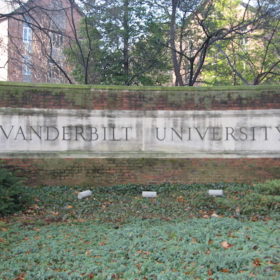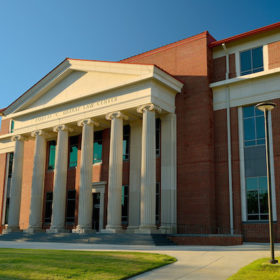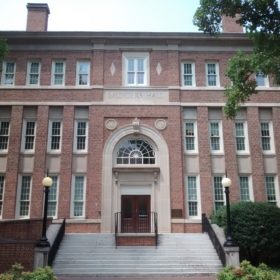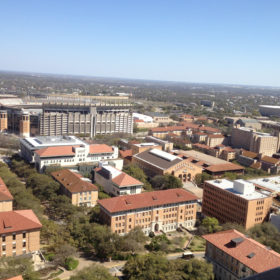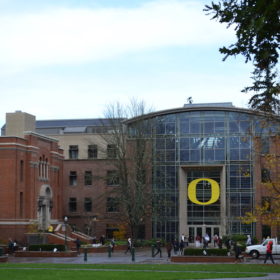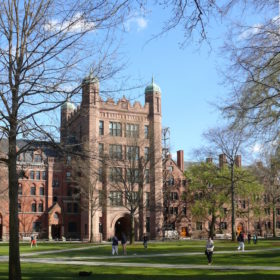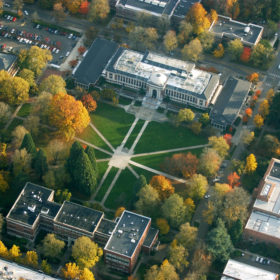In 2000, the University of Georgia proposed renaming the Academic Building on North Campus the “Holmes-Hunter Academic Building,” in honor of the two students who desegregated the school. In announcing the change, Michael Adams, the president of the university, said, “Naming this building for them ensures their personal contributions will never be forgotten.” Embedded in Adams’ comment is the belief that building names matter. This move was meant to be an enduring honor for Hamilton Holmes and Charlayne Hunter-Gault–a statement to current and future students about the school’s history. The importance of building names is further relayed in the UGA Foundation’s policy regarding “Naming Opportunities.” This reads in part:
“The University of Georgia considers the naming of a place or an academic unit in honor of a living or deceased individual, corporation, foundation, or organization to be one of the highest and most distinct honors that it can bestow. Naming a place or an academic unit requires prior authorization by the University of Georgia and the Board of Regents and shall be in accord with Board of Regents procedures and guidelines and those of the University of Georgia.”
When you look at buildings on campus, you should think of the names they bear as statements of veneration, according to this policy.
Which begs the question, who is the university venerating when it displays names like Lumpkin, Moore and LeConte? What did these individuals do to achieve a place next to Hunter-Gault and Holmes, and vice versa? While many students might be able to explain the significance of the Holmes-Hunter Academic Building, few would likely know the meaning behind Lipscomb Hall–a name buried in the pages of the school’s history. Working from the university’s own premise that building names are statements of honor, this website explores the people behind the names and will ask whether all of those people–specifically those with connections to slavery and institutional racism–deserve to be celebrated on campus.
This information below aims to present the national landscape of building name controversies at universities, to outline names that are potentially concerning at UGA (view the detailed list here), and most importantly to open a conversation about alternative names or reasons for maintaining the status quo.
This website was developed by Mollie Simon as part of an independent research project for the HIPR 4160: Public History & Technology course in Fall 2017.
Mapping UGA’s Buildings
For a table view of the buildings, click here.
Suggest a New Building Name
What’s the story at other universities?
The first conversations about college building names began in 2010, when University of Denver law professor Thomas D. Russell published a paper on William S. Simkins and the University of Texas at Austin. UT Austin had named a residence hall after Simkins, a Klansman and professor, in direct response to the Brown v. Board of Education decision. After Russell brought this to light, the name was changed. But, it was not until a few years later that a quick succession of schools began to confront their own unsavory landmark names, although not all cases have been as clean-cut as Simkins or have involved such recent memory.
In 2015, a true national unmasking of the racist individuals whose names are on campus buildings began. In February, a group of students staged a demonstration in front of the University of North Carolina at Chapel Hill’s Saunders Hall. The building is named for an alumnus who help organize the state’s Ku Klux Klan and fought in the Civil War. “I’m really frustrated at the university who allowed this building to stand so long. It makes me feel like we’re foreigners in a space where we don’t belong,” senior Omololu R. Babatunde said of UNC, echoing Alderman’s research on naming and power. The Black Student Task Force at the University of Oregon demanded the removal of slavery supporter Matthew Deady’s name from a campus building, citing similar concerns. Students at Georgetown protested the names of Mulledy and McSherry Halls. In 2016, 200 Yale students gathered to protest the name of slavery proponent John C. Calhoun on a residence hall. These student movements were met with varying responses.
Ultimately, the UNC Board of Trustees voted to turn Saunders Hall into Carolina Hall, but they also passed a 16-year naming freeze to allow more time for considering other changes. At OU, the president announced his decision not to remove Deady’s name but to add an explanatory display to the building, while taking down the name of a Ku Klux Klan “Grand Cyclops” from another structure. Explaining his decision, Michael Schill said that removing Deady would obscure the school’s history. “This is embracing the principle that we want all the history to be preserved and to be understood by people,” Schill said. Georgetown, which has had an especially difficult past with slavery to confront, chose to change the Mulledy and McSherry names. Yale at first changed the name of two residential colleges but left Calhoun, before pulling a 180 and announcing it would replace Calhoun with the name of a female trailblazer.
Click to learn more about other campus debates



